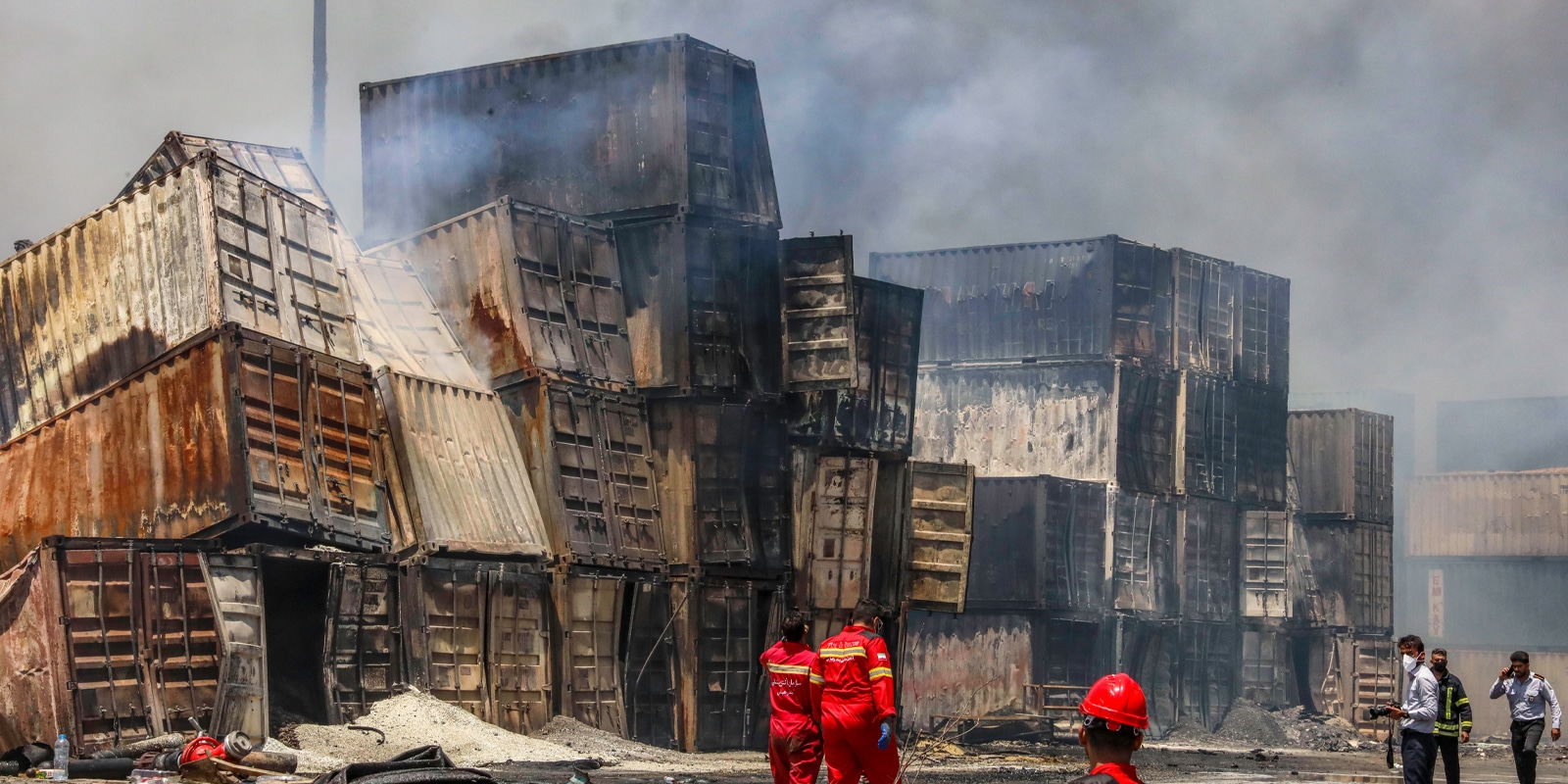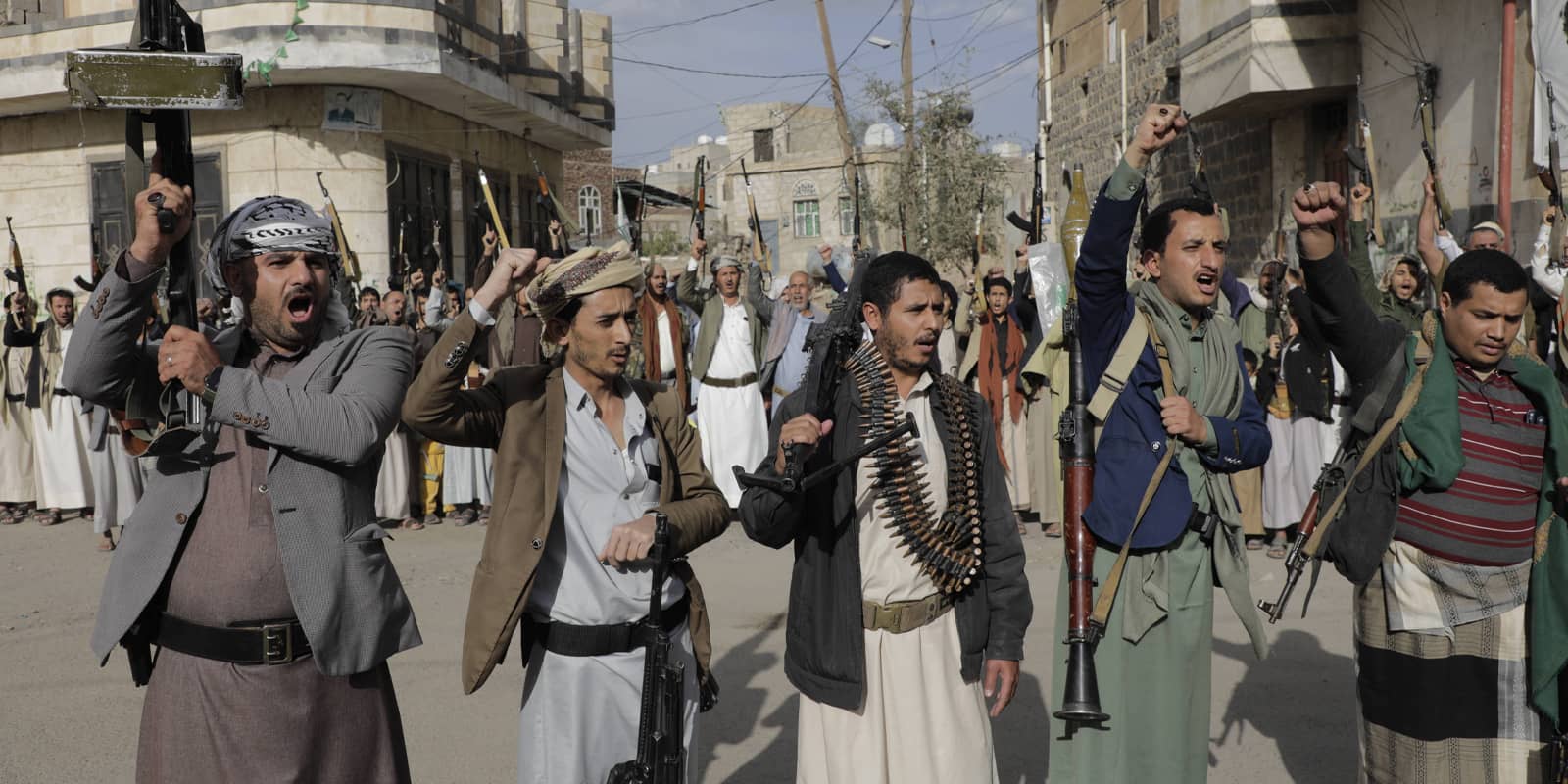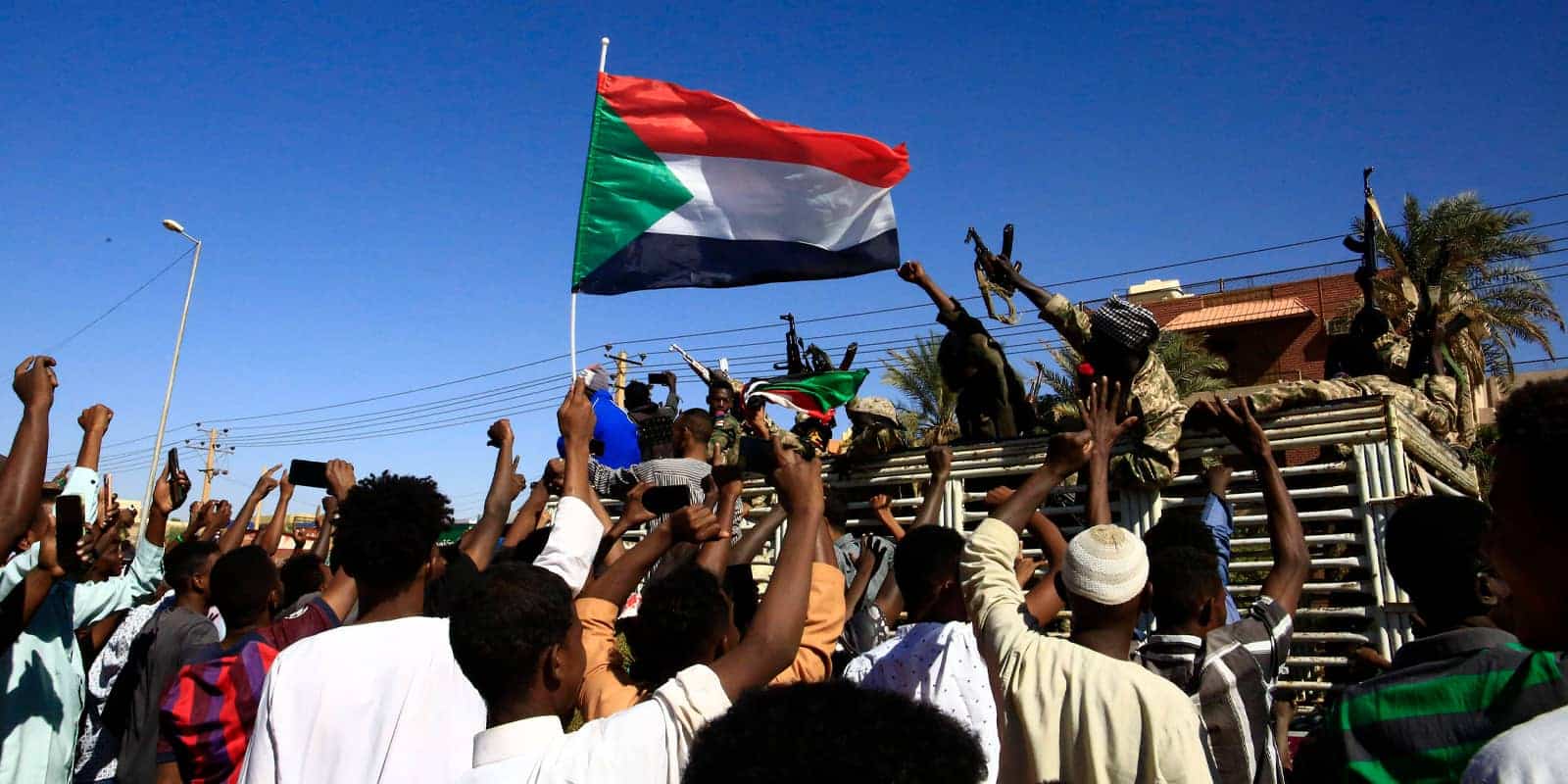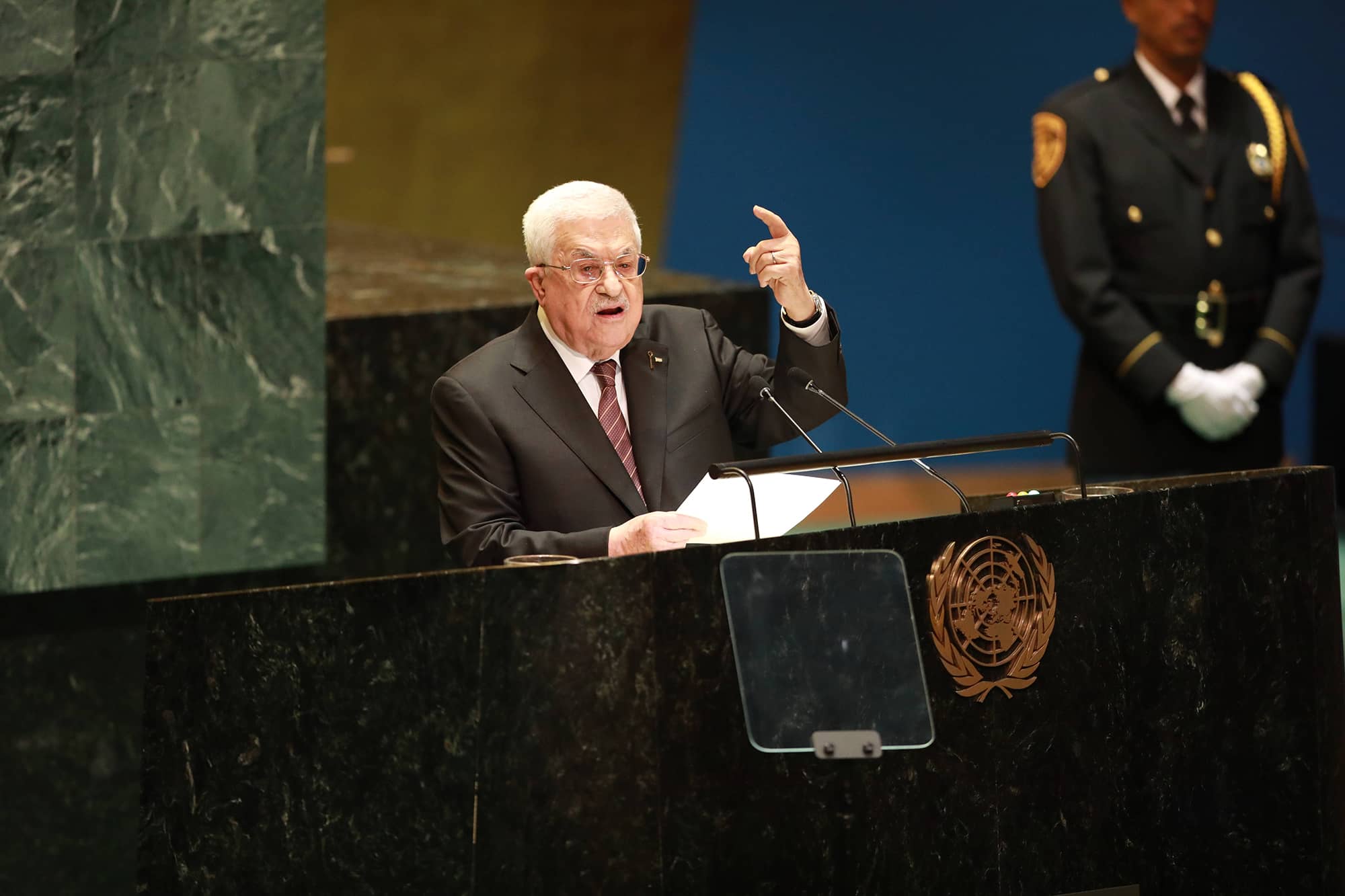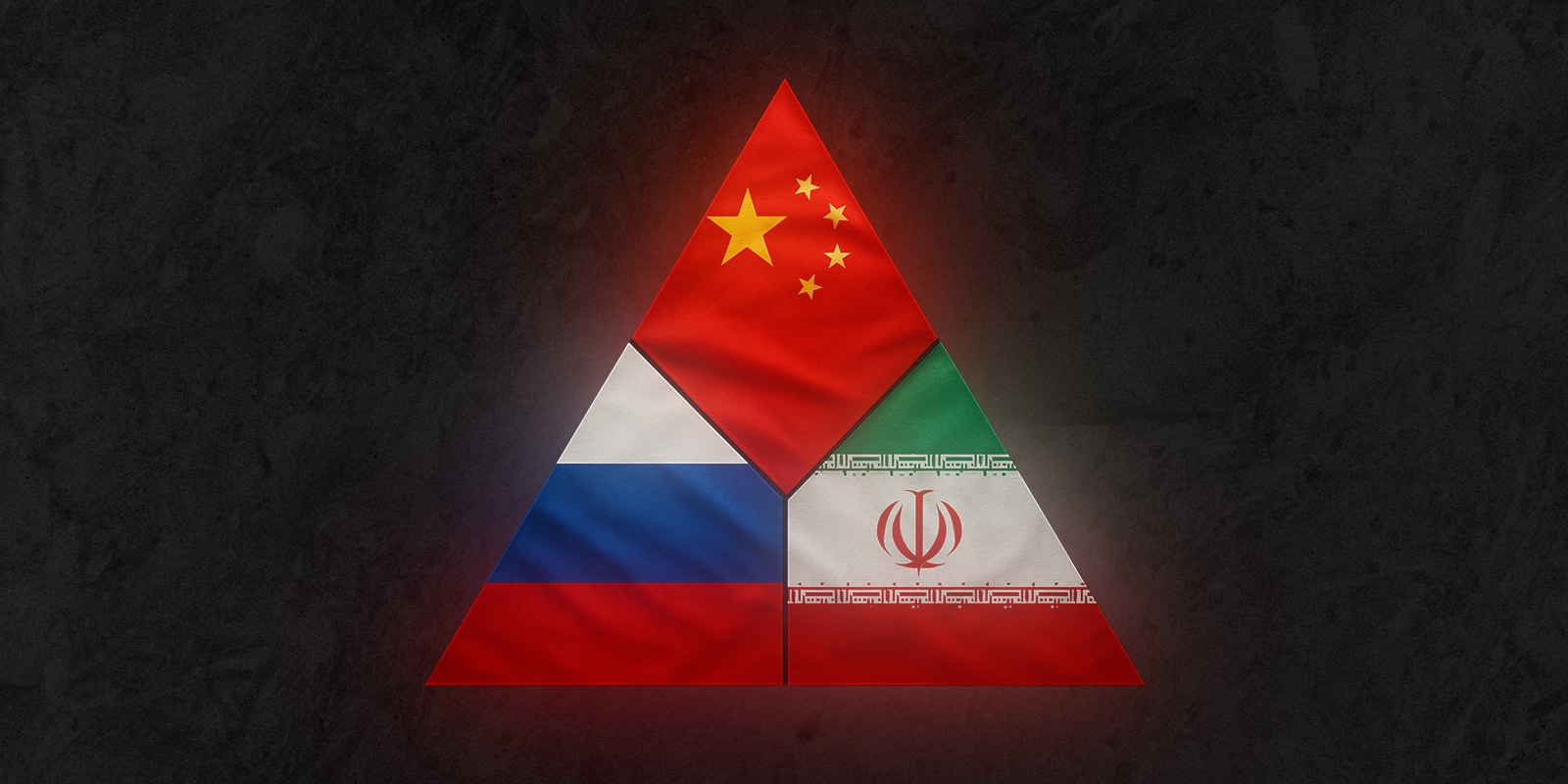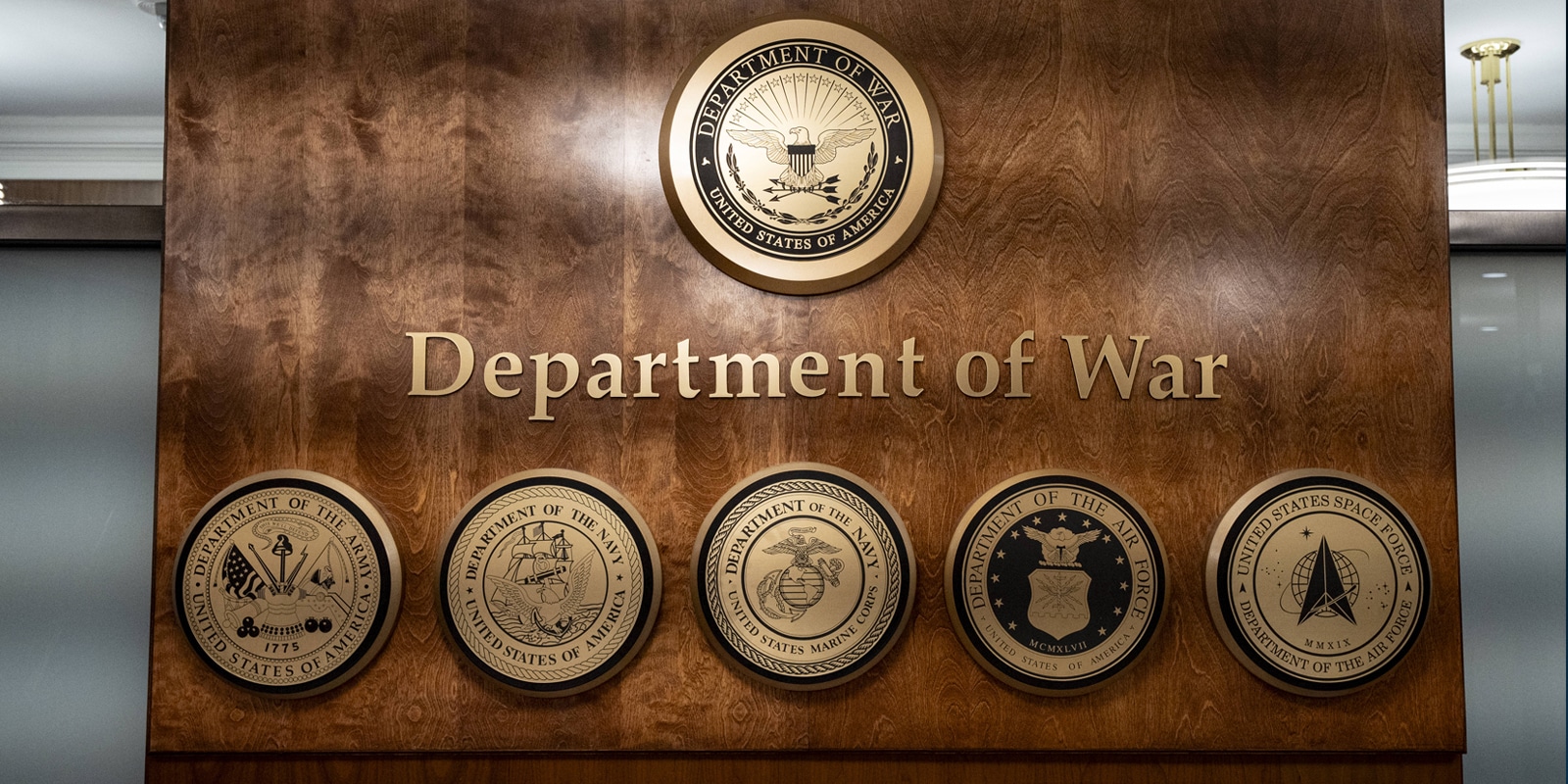Updated Review for May 6, 2025
- The deadly explosion at Shahid Rajaee Port in southern Iran on April 26, 2025, marked (intentionally or not) the beginning of a series of similar incidents across Iran, albeit on a much smaller scale. The regime, in a typical move, is maintaining ambiguity about the situation and focusing on managing the aftermath of the explosion at the port.
- The explosion reportedly ignited flammable raw materials intended for the production of solid fuel for hundreds of missiles, but the full details remain unclear. Regardless of whether it was an accident or deliberate sabotage, the incident embarrasses the regime, which is perceived as negligent and corrupt in light of numerous similar incidents. Alternatively, it raises concerns about a complete infiltration by its opponents, especially following the assassination of the chairman of the Hamas political bureau Ismail Haniyeh and other events.
- Naturally, media sensitivity in Iran regarding similar incidents has increased in the wake of the port explosion.
- Given its predicament, the regime is portraying the port disaster as a malfunction, while denying any connection to its missile production efforts. For now, the regime prefers to shift the blame domestically and deflect criticism from the opposition in exile over its conduct rather than framing the incident as sabotage by a hostile entity. Its hope is to quickly remove the issue from the public agenda by establishing a committee to investigate the causes of the disaster and providing immediate relief to the many victims. It is too early to determine whether this strategy will succeed, but past experience suggests that its chances are favorable.
What Happened?
On the afternoon of April 26, 2025, coinciding with the opening of the third round of talks between Iran and the United States in Muscat, the capital of Oman, a powerful explosion occurred at Shahid Rajaee Port, located near the port city of Bandar Abbas in Hormozgan province, on the coast of the Persian Gulf—approximately 450 km from the scene of the talks. This port is one of the most commercially and strategically important in Iran. The explosion was felt far away and significant destruction was also reported in Bandar Abbas [1] (about 20 km from the port). port. As of May 6, the official casualty figures stood at 57 dead [2], and over 1,000 injured.[3] The Tasnim news agency, affiliated with the Revolutionary Guards, reported that the main firefighting efforts were completed on April 28.[4] On May 3, it was reported that loading and unloading activities at the port were continuing as usual.[5]
In the days following the explosion, several other notable incidents occurred in Iran:
- April 29: An explosion and fire at a chemical manufacturing plant near Isfahan resulted in one fatality and two injuries.[6]
- May 3: A fire broke out at a power plant, along with reports of a power grid outage in southern Karaj (near Tehran). Iranian authorities stated that strong winds caused the fire to spread at a waste site near the power plant. Officials denied that the fire had affected the power plant’s operations and attributed the outages to weather conditions.[7]
- May 4: An explosion and fire at a petrochemical plant in the city of Qom (south of Tehran) injured five people, two of whom were in critical condition.[8]
- May 4: A fire broke out at a tire warehouse in Mashhad (northeastern Iran), with no injuries reported.[9]
So far, no connections have been established between these four separate incidents, aside from their proximity to each other.
Video of the moment of the explosion:
Video claimed to show the start of the fire:
Damaged Infrastructure
Shahid Rajaee Port
The port serves as a major gateway for goods traffic in Iran, reportedly capable of handling about 100 million tons of goods per year—approximately 50% of the country’s imports and exports and around 70% of its maritime cargo traffic. It is connected to a network of railways and roads leading to Russia and northern Europe, making it a critical link in Iran’s regional and international trade network.[10] Notably, media outlets affiliated with the Iranian regime denied that the port was handling large volumes of basic goods and attempted to dispel any rumors or assumptions that the explosion at the port and its subsequent shutdown would lead to a shortage of basic goods.[11]
The port was closed immediately after the explosion, halting shipping traffic in the area. Activity did not resume until two days later, on April 28, and even then, the resumption was only partial.[12] Drone footage revealed significant destruction in the storage areas and possible damage to loading and unloading infrastructure.[13] Residents of Bandar Abbas, the city near the port, were ordered to stay indoors due to fears of toxic gases released by the fire.[14] Public institutions in the city also resumed operations two days later, on April 28.[15]
The Other Explosions
In the aftermath of the explosion at Rajaee Port, subsequent explosions occurred without reports of damage to the operations of the affected facilities, except for the disruption of the power plant in Karaj (which authorities stated was not caused by the fire). However, it is possible that details about the shutdown or its extent are being suppressed. Furthermore, no reports have indicated a clear connection between the damaged facilities and any security activity.
- Isfahan: The explosion occurred at a factory owned by the Ava Nar Parsian ” company,[16] which
produces various pyrotechnic products and is under the supervision of the National Security Council.[17] - Karaj: Montazer Ghaem Power Plant
- Qom: A fire broke out at the Mahmoud Abad Industrial Zone at a petrochemical plant. Local media
claimed that the fire was caused by an explosion in a tank containing chemical materials.[18] - Mashhad: A fire broke out in a tire warehouse of a local motorcycle factory, located near the Electrosteel refrigeration equipment factory.[19]
What Caused the Explosions?
Shahid Rajaee Port
The circumstances surrounding the explosion have not yet been fully clarified. A prevalent belief in the Western media suggests that the explosion was caused by a cargo of material used in the defense industry. In February 2025, it was reported that a shipment from China containing sodium perchlorate, a substance used to produce rocket fuel, had arrived in Iran.[20] An earlier report claimed that this shipment contained enough fuel for 260 medium-range missiles, packed into 34 containers.[21]. This claim was corroborated by a New York Times source with ties to the Revolutionary Guards, who confirmed that this was indeed the material in question.[22] Further confirmation of the shipment’s contents came from the private security firm Ambrey, which was quoted by the Associated Press as stating that a shipment of a chemical linked to rocket fuel had arrived at the port in March, though it did not specify the exact type of material).[23]
On the other hand, an Iranian Defense Ministry spokesman responded to these reports, asserting that “there was no fuel cargo or cargo for military purposes in the port at the time of the explosion.”[24] This denial was echoed by Iranian state media.
The Other Events
The Iranian authorities and media have characteristically provided very little information about the incidents that occurred after the explosion at Rajaee Port. They might not have addressed these events at all if not for the significant public profile they gained due to casualties and their high visibility and impact on the public. However, these subsequent events did not gain significant resonance relative to the explosion that occurred at the port, and as a result, public concern about their circumstances was quickly abandoned.
Official Responses
Iranian authorities have primarily focused on the Rajaee port explosion, and there have been no official comments from senior officials regarding the events in Mashhad, Qom, Isfahan, and Karaj, aside from informative updates from regional emergency officials.
On April 27, the day after the explosion, Iranian Leader Khamenei issued a brief statement calling on security forces and the judiciary to investigate the incident, uncover any malicious intent or negligence, and remind every official of their responsibility to prevent such incidents.[25]
Iranian President Masoud Pezeshkian arrived in Bandar Abbas the day after the explosion to closely monitor the response to the fire. Upon landing, he stated, “I came here to closely examine the efforts and provide a response if there is an issue that has arisen that requires the government’s rapid intervention. We are trying to provide assistance to the families of the victims.”[26]
Pezeshkian’s deputy, Mohammad Reza Aref, called on residents to donate blood and took part in a symbolic action with other ministers.[27] He noted that the investigation was underway, and its results would be made public.[28]
The head of the judiciary, responsible for the prosecution and courts in Iran, stated that the relevant legal authorities, including the Attorney General, in cooperation with the security and intelligence agencies, must quickly identify the possible perpetrators and those whose negligence contributed to the incident at Shahid Rajaee Port. He emphasized that appropriate measures should be taken against them in accordance with the law and relevant standards and procedures.[29]
Exchange of Accusations Regarding the Cause
Following the discussion about the storage of hazardous materials at the port, the CEO of Sina Marine and Port Services, which operates the container yard where the explosion occurred, told the ILNA news agency that the incident resulted from a false declaration of the shipment’s contents, which were imported and stored as a “regular” cargo instead of as dangerous materials. He emphasized that the nature and extent of the explosion, along with the signs of destruction, indicate that it involved extremely dangerous cargo.[30] This statement implied criticism of the country’s security authorities, who allegedly attempted to conceal the true nature of the shipment. It is worth noting that Sina Company is connected to the Mostazafan Foundation (Foundation of the Oppressed), which has ties to the Iranian Supreme Leader.
On April 29, a group of conservative Majlis members initiated an impeachment process against the Minister of Transport and Urban Development [31], gathering at least 40 signatures in support of the move. The impeachment’s backers claimed their move was motivated by the shortcomings that led to the explosion at the port; however, this appears to be a political attack against Pezeshkian’s government.[32]
Authorities’ Control Over Information and Public Narrative Following the Explosion
Similar to other sensitive domestic events, the authorities in Iran took steps to maintain media control:
First, on the eve of the explosion, reports indicated that the Internet in the Bandar Abbas region had slowed significantly, making it impossible to download or upload videos to the network.[33] This practice is familiar from similar events in Iran, such as major protests against the regime. Additionally, the Prosecutor General in Tehran announced the filing of indictments against several media outlets and online influencers for “publishing false information,” emphasizing that this is a criminal offense in Iran.[34]
Furthermore, the news website Fars News affiliated with the Revolutionary Guards, published an article on April 28 to refute what it deemed rumors and misinformation being circulated online. The article addressed the nature of the cargo stored at the port, the judiciary’s actions against the media, and the consequences of halting activities at the port.[35]
The sparse reporting of additional incidents in Iran by state-run media, contrasted with extensive documentation by external media—primarily opposition outlets in Persian outside Iran—highlights the struggle over the public narrative between the two sides.
Media outlets opposing the regime are providing detailed coverage of the events and are exploiting the momentum created by the incident at Shahid Rajaee Port to undermine the foundations of the regime’s control over the situation in Iran, even to the extent of publishing reports of questionable reliability.[36]
Conversely, establishment media exercise caution, demonstrating control over the narrative by reporting on events only when they surpass a certain “noise threshold.” Their objective is to maintain public trust in the regime by reflecting conditions as much as possible, while simultaneously downplaying any destabilizing events.
Suspicion of Sabotage and External Involvement
The Iranian authorities have officially denied that the explosion was due to sabotage. A government spokeswoman stated on the sidelines of a cabinet meeting on April 30 that suspicions of sabotage had been dismissed and that initial findings pointed to human error. However, she emphasized that the investigation is ongoing and that these results are not final.[37]
International Reactions
There are various sources making statements that blame Israel for the explosion. Notably, Mohammad Sarraj, Tehran’s representative in the Majlis, accused Israel, stating: “The explosion in Bandar Rajaee was in no way accidental, and there are clear signs of Israeli involvement… When explosions occur at four different points [apparently referring to the fire centers], it indicates that explosives have already been planted in the containers.”[38]
Several countries expressed condolences to Iran, including China[39] Iraq, the United Arab Emirates, Saudi Arabia, Pakistan, India, Turkey, the UN and Hezbollah.[40] On April 27, Russian President Valdimir Putin ordered the dispatch of Beriev Be-200 firefighting aircraft to Iran, along with a military transport plane believed to be carrying rescue equipment.[41]
Reactions of the Iranian Opposition in Exile

TAVANA, an organization that operates outside Iran and advocates for human rights, published a particularly critical post on the X network on April 29. This post captured the mood among the opposition, stating:
“There are no unexpected events in Iran. There is a regime in Iran that prevented the import of vaccines during the COVID-19 pandemic and killed tens of thousands of Iranians. This is a regime that fired a missile at a passenger plane, this is a regime that shot at the hearts, heads and eyes of defenseless people… This is a regime that stores raw materials for ballistic missile fuel without meeting security standards. Materials used to build missiles, not to protect the people and interests of Iran, but to export revolutionary and ideological goals and preserve the bloody regime.”[43]
Background and Follow-Up
As of this writing, the exact circumstances of the explosion are still under investigation. The incident highlights a fraction of the complex security and economic issues and cognitive warfare that Iran faces amid both external and internal pressures.
[1] https://x.com/IranIntl/status/1916113248337658000
[2] https://www.irna.ir/news/85822876
[3] https://www.irna.ir/news/85819235
[4] https://www.tasnimnews.com/fa/news/1404/02/08/3301367
[5] https://www.mehrnews.com/news/6454894
[6] https://en.mehrnews.com/news/231229
[7] https://www.bbc.com/persian/articles/cg417nkykx4o
[8] https://www.iranintl.com/202505046479
[9] https://www.tasnimnews.com/fa/news/1404/02/14/3305440
[10] https://sobhesahel.com/news/35529
[11] https://farsnews.ir/z_khosravi/1745778220445630558
[12] https://en.mehrnews.com/news/231167/Iran-restores-op-at-its-largest-container-port-after-blast
[13] https://x.com/PadDolat/status/1916760051961778196
[14] https://edition.cnn.com/2025/04/26/middleeast/iran-bandar-abbas-port-explosion-intl/index.html
[15] https://www.iranintl.com/fa/liveblog/Explosion,%20BandarAbbas#202504269613
[16] https://www.iranintl.com/ar/202504297342
[18] https://www.iranintl.com/202505046479
[19] https://www.tasnimnews.com/fa/news/1404/02/14/3305440
[20] https://www.jpost.com/middle-east/article-842197?utm_source=chatgpt.com
[21] https://www.ft.com/content/f0bc9fcc-11b3-4615-bd24-163f8938f2a5
[22] https://www.nytimes.com/2025/04/26/world/middleeast/iran-port-explosion-bandar-abbas.html
[23] https://apnews.com/article/iran-explosion-fire-bandar-abbas-72637c6b3e152a30045275f57ace29ed
[24] https://www.tehrantimes.com/news/512341/No-military-cargoes-at-site-of-deadly-port-blast-in-South-of
[25] https://farsi.khamenei.ir/message-content?id=60064
[26] https://www.isna.ir/news/1404020704715
[27] https://www.isna.ir/news/1404020704909
[28] https://www.isna.ir/news/1404020704935
[29] https://www.isna.ir/news/1404020805481
[30] https://www.iranintl.com/fa/liveblog/Explosion,%20BandarAbbas#202504269613
[31] https://www.tasnimnews.com/fa/news/1404/02/09/3301895
[32] https://www.tabnak.ir/fa/news/1303471
[33] https://x.com/IranIntl_En/status/1916207327650197600
[34] https://x.com/ManotoNews/status/1916446837533180062?t=370HEU90UI-Rcvm4cFB5hQ&s=19
[35] https://farsnews.ir/z_khosravi/1745778220445630558
[36] For example, an exclusive report in “Keyhan London” about an explosion at a Revolutionary Guard base in Fars, without independent references from other sources. https://t.me/KayhanLondonChannel/49604
[37] https://en.mehrnews.com/news/231246
[38] https://www.iranintl.com/202504276918
[39] https://www.ynetnews.com/article/b1d2p7a1xl
[40] https://www.aljazeera.com/news/2025/4/27/irans-president-pezeshkian-visits-injured-site-of-deadly-port-explosion
[41] https://www.reuters.com/world/europe/putin-offers-iran-russian-help-after-blast-iranian-port-bandar-abbas-kremlin-2025-04-27/
[42] https://x.com/Tavaana/status/1916987393808470331
[43] https://x.com/Tavaana/status/1916987393808470331
JISS Policy Papers are published through the generosity of the Greg Rosshandler Family.
Photo: IMAGO / Middle East Images

